
Five Ways to Attract Wildlife to Your Backyard
If you are looking for ways to attract wildlife to your backyard, then you have come to the right place! In this blog post, we’ll be exploring different methods for attracting and nurturing wildlife in an eco-friendly way. We will discuss how native plants can provide food and habitat, which water sources are best suited for animals, how to create safe shelters, and much more. By the end of this blog post, you’ll have all the tips and tricks required to turn your backyard into a thriving habitat for various types of animals.
Plant a variety of native plants that provide food and habitat.
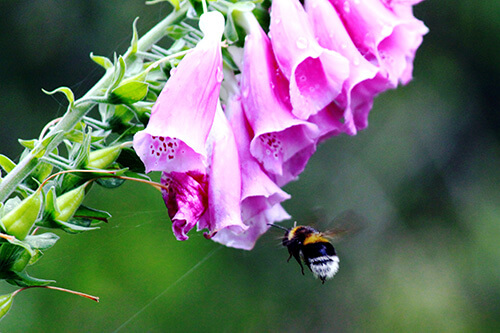 Planting a variety of native plants is one of the best ways to attract wildlife to your backyard. Native plants provide food in the form of berries and nuts, as well as providing shelter and nesting materials. They also help to increase biodiversity, which helps promote healthier ecosystems for animals to thrive in. Planting native trees, shrubs, wildflowers, and grasses will create a space that allows for birds, insects, and other animals to find food and shelter from predators. Not only do these plants have benefits for wildlife but they require less maintenance than non-native plants since they are accustomed to the local soil conditions and climate.
Planting a variety of native plants is one of the best ways to attract wildlife to your backyard. Native plants provide food in the form of berries and nuts, as well as providing shelter and nesting materials. They also help to increase biodiversity, which helps promote healthier ecosystems for animals to thrive in. Planting native trees, shrubs, wildflowers, and grasses will create a space that allows for birds, insects, and other animals to find food and shelter from predators. Not only do these plants have benefits for wildlife but they require less maintenance than non-native plants since they are accustomed to the local soil conditions and climate.
Provide water sources, such as bird baths and small ponds.
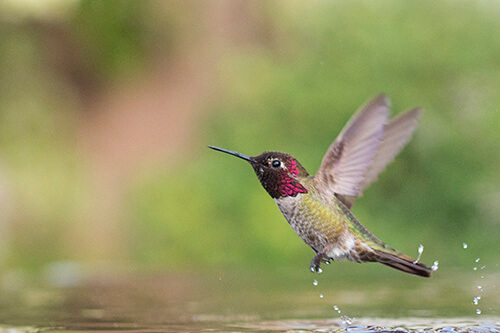 Providing a source of water is essential for wildlife in your backyard. Bird baths and small ponds are excellent methods of providing a source of water. Not only do they help to attract birds and other animals, but they also give them a safe source of hydration. If you are looking to create a bird bath or pond, make sure it is shallow enough that there is no risk of drowning.Additionally, place rocks or pebbles in the water to provide areas where animals can drink safely without having to enter the water. One caveat: ensure your water source doesn’t freeze over by keeping water moving (with a bubbler or waterfall) or add a small heater to keep it usable. By adding these water sources you will be able to keep birds and other animals safe, hydrated, and happy in your backyard.
Providing a source of water is essential for wildlife in your backyard. Bird baths and small ponds are excellent methods of providing a source of water. Not only do they help to attract birds and other animals, but they also give them a safe source of hydration. If you are looking to create a bird bath or pond, make sure it is shallow enough that there is no risk of drowning.Additionally, place rocks or pebbles in the water to provide areas where animals can drink safely without having to enter the water. One caveat: ensure your water source doesn’t freeze over by keeping water moving (with a bubbler or waterfall) or add a small heater to keep it usable. By adding these water sources you will be able to keep birds and other animals safe, hydrated, and happy in your backyard.
Keep pets indoors or away from areas of wildlife activity.
 Keeping pets indoors or away from areas of wildlife activity is an important part of protecting wildlife in your backyard. Cats and dogs may be attracted to the small animals in your yard, such as birds, rodents, or other creatures. It is best to keep these pets inside or restrain them while they are outside so they do not disturb or harm any wildlife.Additionally, make sure that any outdoor dog runs are not set up in areas where wildlife likes to rest and feed. By taking these extra steps you can ensure that both your pets and the local wildlife stay safe and happy.
Keeping pets indoors or away from areas of wildlife activity is an important part of protecting wildlife in your backyard. Cats and dogs may be attracted to the small animals in your yard, such as birds, rodents, or other creatures. It is best to keep these pets inside or restrain them while they are outside so they do not disturb or harm any wildlife.Additionally, make sure that any outdoor dog runs are not set up in areas where wildlife likes to rest and feed. By taking these extra steps you can ensure that both your pets and the local wildlife stay safe and happy.
Create a shelter for wildlife with logs, brush piles, birdhouses, and nesting boxes.
Creating a shelter for wildlife can be a great way to improve your backyard habitat. Logs, brush piles, birdhouses, and nesting boxes are all excellent places for animals to take refuge from harsh weather or predators. Logs provide shelter underneath and can also be used by birds as perching spots.Brush piles offer animals tall grasses and shrubs to hide in while keeping warm. Birdhouses and nesting boxes give birds and small animals a safe place to build their homes. All of these structures will help create an inviting environment for wildlife in your backyard.
Leave some areas of your garden undisturbed.
 Providing undisturbed areas in your garden is a great way to support local wildlife. By leaving some areas of your garden untouched, you are giving animals the chance to make their own homes without interruption from people or pets.This can take the form of wild patches of grass, untended corners of your yard, or piles of sticks and logs that provide harborage for small creatures. Even if it seems like doing nothing is best, keeping these areas free from human activity and disturbance will be beneficial to the wildlife that makes use of them.
Providing undisturbed areas in your garden is a great way to support local wildlife. By leaving some areas of your garden untouched, you are giving animals the chance to make their own homes without interruption from people or pets.This can take the form of wild patches of grass, untended corners of your yard, or piles of sticks and logs that provide harborage for small creatures. Even if it seems like doing nothing is best, keeping these areas free from human activity and disturbance will be beneficial to the wildlife that makes use of them.
With a few simple changes and an open mind, you can transform your backyard into a hub of biodiversity, where birds, amphibians, mammals, and insects come together to build their homes. Create shelters with logs, brush piles, birdhouses, and nesting boxes to attract wildlife to your backyard. Leave some areas of your garden undisturbed for animals to make their own homes. Once you get started on making your backyard more wildlife-friendly, there’s no telling all the types of critters that will call it home.

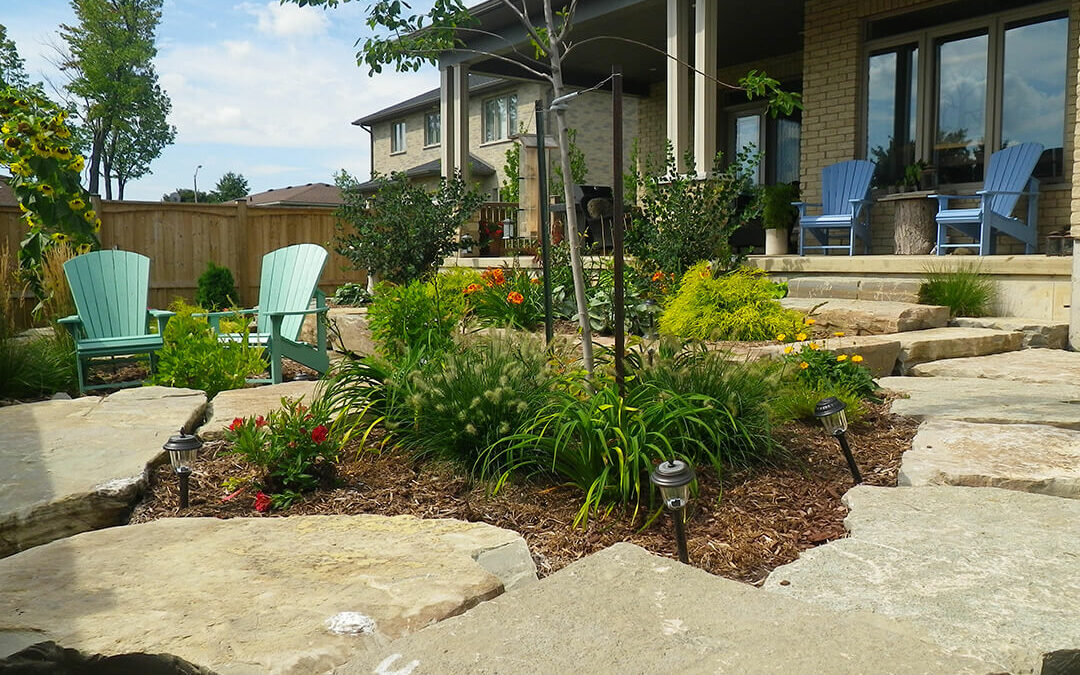


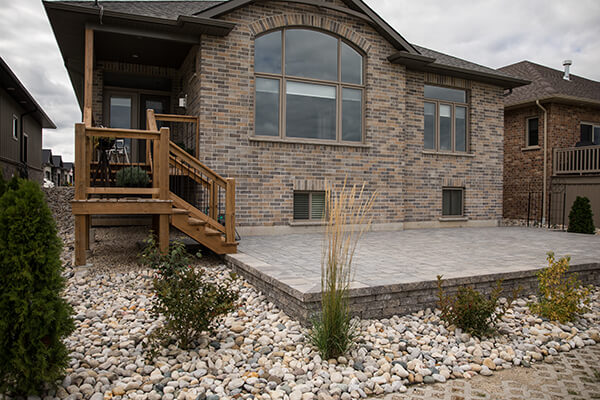







 Flagstone is often one of the first products people think of when they start planning a patio. It’s beautiful and natural, coming in a wide range of shapes, sizes, and colours. While it can be cut into geometric shapes, many like the rustic appearance of a patio created using various sizes that are pieced together to create a walkway and/or patio.
Flagstone is often one of the first products people think of when they start planning a patio. It’s beautiful and natural, coming in a wide range of shapes, sizes, and colours. While it can be cut into geometric shapes, many like the rustic appearance of a patio created using various sizes that are pieced together to create a walkway and/or patio. Above, we mentioned the rustic style, which is a subset of traditional and informal styles. The main styles to consider include traditional, modern, formal, and informal.
Above, we mentioned the rustic style, which is a subset of traditional and informal styles. The main styles to consider include traditional, modern, formal, and informal. There have never been more colour options for engineered stone products than there are today. And even natural stone is available in a wide array of colours and shades.
There have never been more colour options for engineered stone products than there are today. And even natural stone is available in a wide array of colours and shades.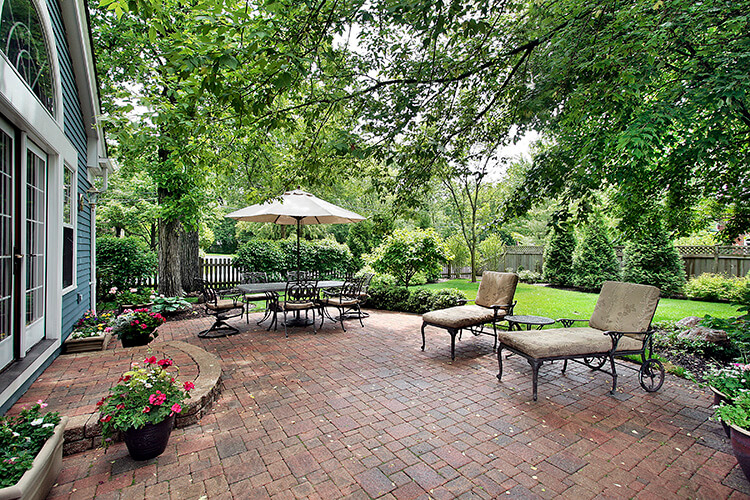 The budget factor needn’t take the fun out of your material selection process. There are lots of great options at every price point. If your budget is limited, consider selecting a cost-effective product as your primary material and then splurging on something a bit more expensive for a border, inlay, stairs, or other accent.
The budget factor needn’t take the fun out of your material selection process. There are lots of great options at every price point. If your budget is limited, consider selecting a cost-effective product as your primary material and then splurging on something a bit more expensive for a border, inlay, stairs, or other accent.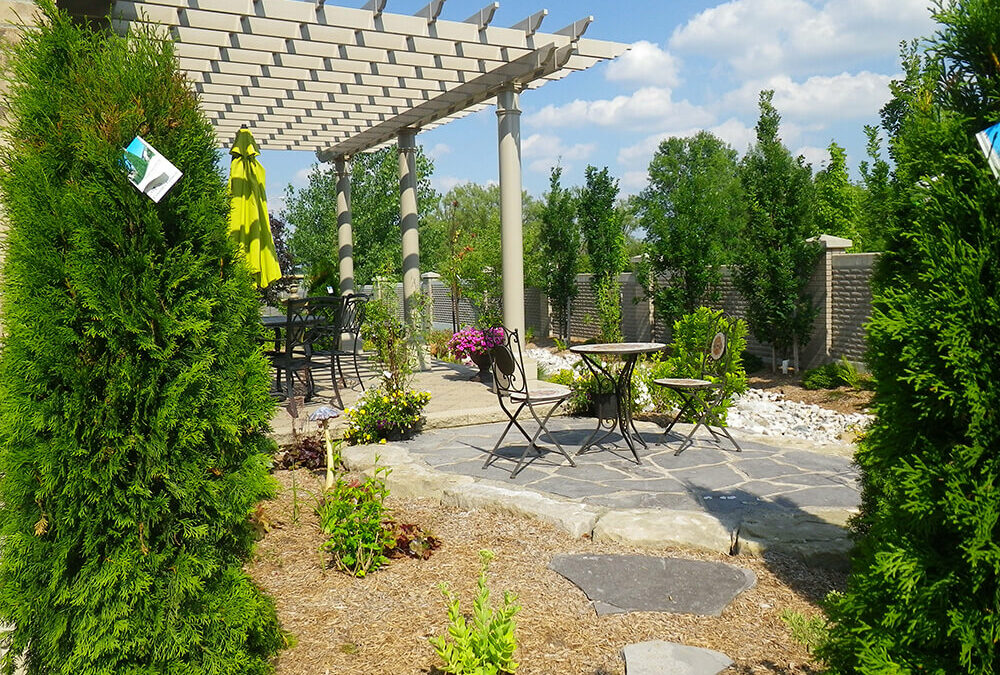
 If you search online for ways to increase a home’s value, one method that almost invariably tops the list is to increase your home’s curb appeal. After all, the front of your home provides the first impression for potential buyers, whether they’re passing by or viewing your home online.
If you search online for ways to increase a home’s value, one method that almost invariably tops the list is to increase your home’s curb appeal. After all, the front of your home provides the first impression for potential buyers, whether they’re passing by or viewing your home online.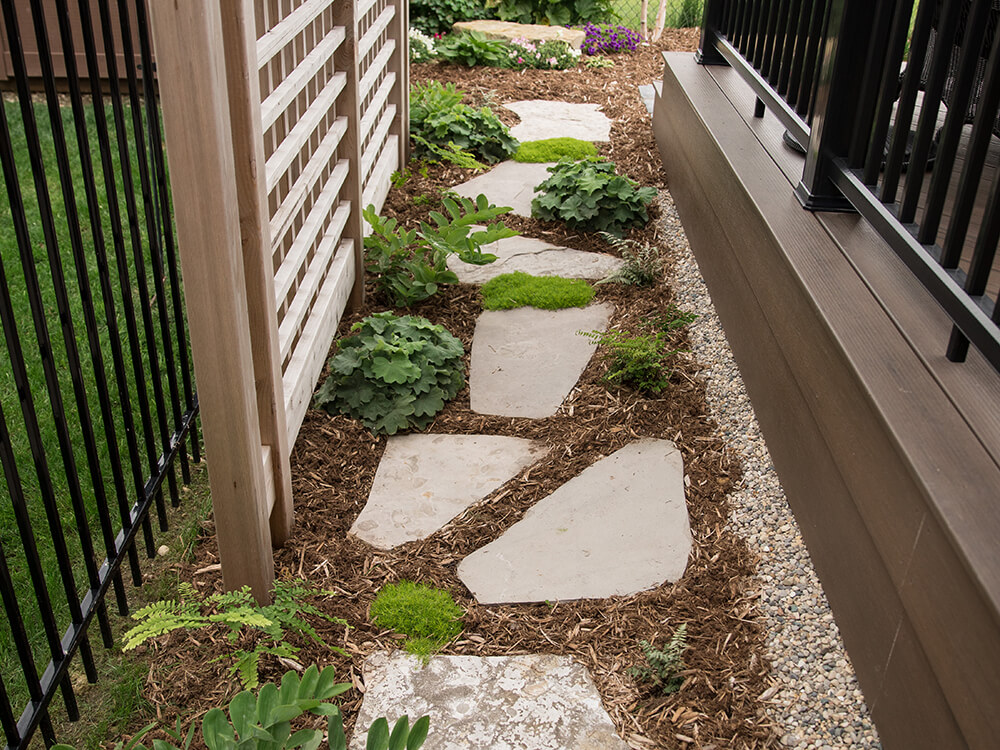 If you’re looking to upgrade your home’s exterior – front, sides, or back – consider updates that will enhance livability, functionality, and practicality. Not only will this maximize your enjoyment, but when it comes time to sell, potential buyers will be able to see themselves relaxing in, rather than working on, the yard and gardens.
If you’re looking to upgrade your home’s exterior – front, sides, or back – consider updates that will enhance livability, functionality, and practicality. Not only will this maximize your enjoyment, but when it comes time to sell, potential buyers will be able to see themselves relaxing in, rather than working on, the yard and gardens. Walkways, patios, and retaining walls are gratifying additions to a home’s exterior. In keeping with the theme of minimal maintenance, though – a focus of almost every one of our customers – we recommend being mindful of the materials you use.
Walkways, patios, and retaining walls are gratifying additions to a home’s exterior. In keeping with the theme of minimal maintenance, though – a focus of almost every one of our customers – we recommend being mindful of the materials you use. Plants, trees, and shrubs can be used to camouflage imperfections, add privacy, and enhance the existing beauty around your home’s exterior and yard. For example, an exposed foundation can make a home appear old and unkempt. But, planting a balanced selection of plants and shrubs appropriate for the location’s sun exposure can add depth and colour, providing a welcome distraction from your foundation’s drab, grey expanse.
Plants, trees, and shrubs can be used to camouflage imperfections, add privacy, and enhance the existing beauty around your home’s exterior and yard. For example, an exposed foundation can make a home appear old and unkempt. But, planting a balanced selection of plants and shrubs appropriate for the location’s sun exposure can add depth and colour, providing a welcome distraction from your foundation’s drab, grey expanse. Add unique atmosphere to your outdoor living areas, walkways, and/or front entrance with lighting and water. Ponds, streams, waterfalls, fountains, and bubbling rocks add an audio-visual element that has a universally relaxing effect. And including lighting along walkways, trees, water features, pools, and patios enhances outdoor safety and enjoyment after the sun goes down.
Add unique atmosphere to your outdoor living areas, walkways, and/or front entrance with lighting and water. Ponds, streams, waterfalls, fountains, and bubbling rocks add an audio-visual element that has a universally relaxing effect. And including lighting along walkways, trees, water features, pools, and patios enhances outdoor safety and enjoyment after the sun goes down.
 Soil is foundational to everything landscaping-related. The naturally occurring soil in your area may be clay-based. Clay holds onto water, which can promote poor drainage and lead to root rot in plants and trees.
Soil is foundational to everything landscaping-related. The naturally occurring soil in your area may be clay-based. Clay holds onto water, which can promote poor drainage and lead to root rot in plants and trees.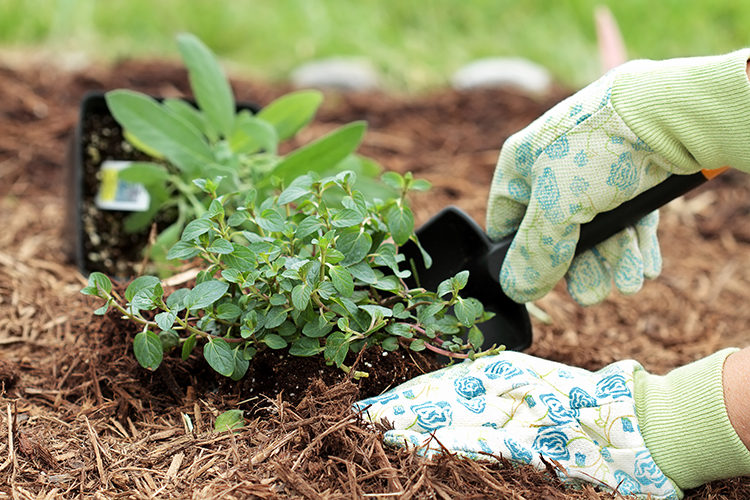 There are various types of mulch, including rustic options like straw, grass clippings, and shredded leaves. Some gardeners are even using newspaper as most of them are printed with neutrally-derived inks.
There are various types of mulch, including rustic options like straw, grass clippings, and shredded leaves. Some gardeners are even using newspaper as most of them are printed with neutrally-derived inks. Stone has multiple applications in landscaping. Natural stone can be used with landscape fabric in place of mulch to suppress weeds and help retain moisture. Large natural rocks can be used as standalone sculptures and can even be made into water features. And of course, flat stone like flagstone is a great natural option for walkways, stairs, and patios.
Stone has multiple applications in landscaping. Natural stone can be used with landscape fabric in place of mulch to suppress weeds and help retain moisture. Large natural rocks can be used as standalone sculptures and can even be made into water features. And of course, flat stone like flagstone is a great natural option for walkways, stairs, and patios.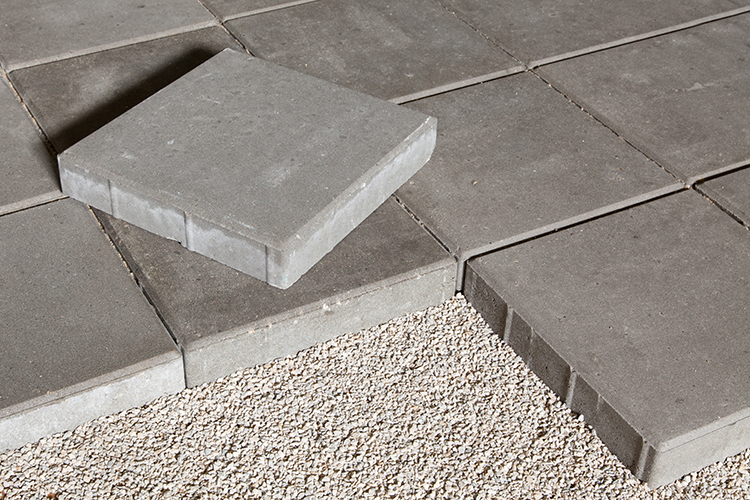 Sand is an aggregate that’s most often used as a foundation for stone and pavers. It’s typically a combination of granular A gravel, sand or high-performance base stone.
Sand is an aggregate that’s most often used as a foundation for stone and pavers. It’s typically a combination of granular A gravel, sand or high-performance base stone.